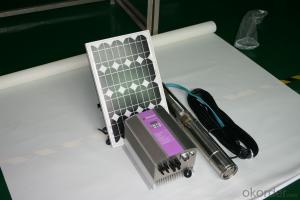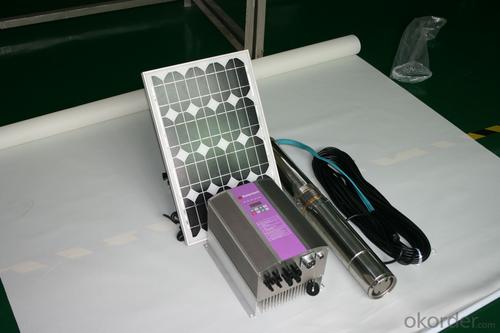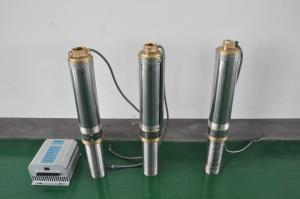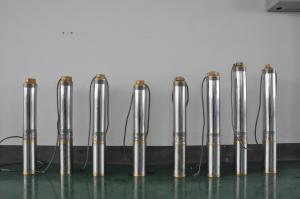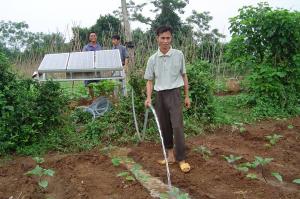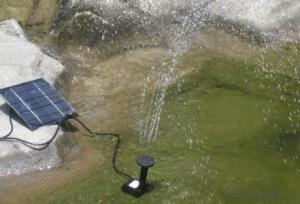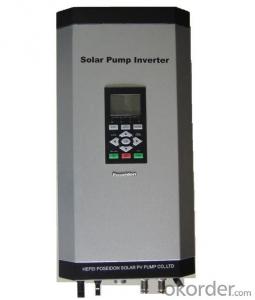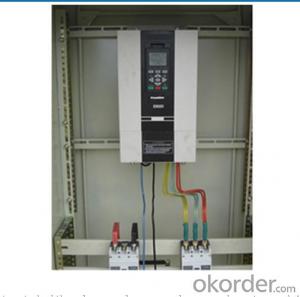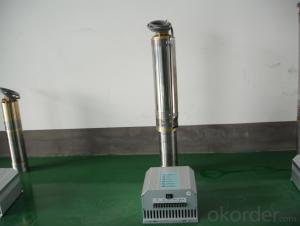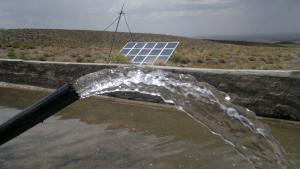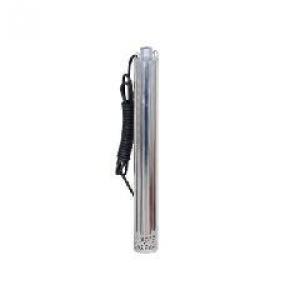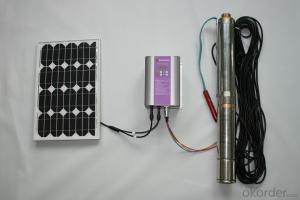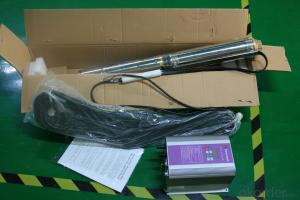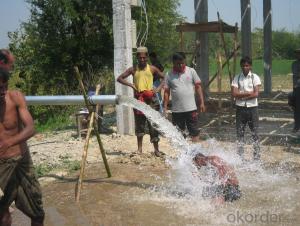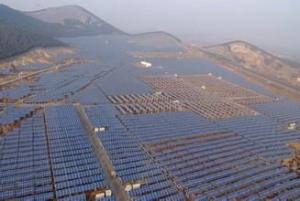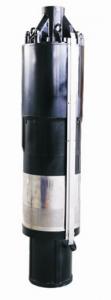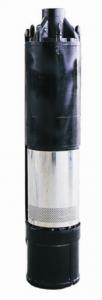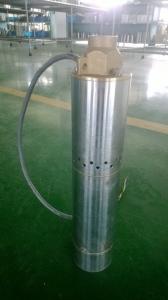Sf2 Solar Pump Ac Solar Pumping Systems
- Loading Port:
- Shekou
- Payment Terms:
- TT OR LC
- Min Order Qty:
- -
- Supply Capability:
- 100000000000000000000 /month
OKorder Service Pledge
OKorder Financial Service
You Might Also Like
Products
Solar Pumping System supplied by Shenzhen Solartech Renewable Energy Company(manufacturer) can be applied to daily use (ground water), agricultural irrigation, forestry irrigation, desert control, pasture animal husbandry, water supply for islands, wastewater treatment engineering, and so on. Solartech” Solar water pump System is dispensed with energy storing devices, and stores water instead of electricity. It improves the reliability of the device, at the same time, it lowers the construction and maintenance costs of the irrigation system dramatically.
In recent years, with the promotion of the utilization of new energy resources, Solar Pumping System is more and more used in municipal engineering, city centre squares, parks, tourist sites, resorts and hotels, the landscapes and fountain irrigation systems in the residential areas.
Technical Features
Optimization of Single Pump System
A single solar irrigation system consists of only one pump, a power -matched solar array and an inverter . The aim of optimization is to reduce the amount of PV modules as much as possible on the premise of filling the requirement of head and capacity. The rotational speed of pump is regulated according to the irradiation on the solar array; when the sunlight reaches its peak, the pump runs at the rated speed, and the output approaches the peak power of the solar array; when the sunlight is less abundant, the speed of pump varies bellow the range of the rated speed; when the speed as low as the capacity becomes zero, the solar pumping system stops working. So, there are big differences between solar irriation systems and traditional pumping systems in system design, and the system should be optimized according to the requirements of head, capacity, and local conditions of sunlight.
•Determine the optimal average daily operating time and the range of speed governing.
•Choose the optimal head and capacity of the pump.
•Determine the maximum power of PV modules, the best working voltage and method of connection.
Optimization of Multi-pump Systems:
There are several pumps in a multi-pump system. The pumps can be driven either by only one high-power inverter, or by several matching inverters. In the case of large capacity demand, the operation of the multi-pump system is more flexible. By switching solar arrays and pumps, all of the pumps run in MPPT mode when the sunlight is abundant, while some pumps will be shut down and all solar arrays supply power intensively for the rest running pumps when irradiation is weak. Based on the optimization of single pump system, the range of speed can be further optimized, and the photovoltaic(PV) pumping system always works with high efficiency.
Product Specifications
Model | Rated Power ( kW ) | Rated Voltage ( V ) | Head ( M ) | Daily Flow ( ㎥/ D ) |
PS370 | 0.37 | 220 | 20-47 | 20-1 |
PS550 | 0.55 | 220 | 15-70 | 40-1 |
PS750 | 0.75 | 220 | 6-81 | 100-1 |
PS1100 | 1.1 | 220 | 8-93 | 100-1 |
PS1500 | 1.5 | 220 | 7-128 | 130-1 |
PS2200 | 2.2 | 380 | 12-163 | 130-1 |
PS3000 | 3 | 380 | 9-187 | 250-10 |
PS4000 | 4 | 380 | 6-225 | 500-10 |
PS5500 | 5.5 | 380 | 10-172 | 500-20 |
PS7500 | 7.5 | 380 | 15-237 | 500-20 |
PS9200 | 9.2 | 380 | 20-140 | 500-40 |
PS11000 | 11 | 380 | 23-159 | 500-40 |
PS13000 | 13 | 380 | 27-189 | 500-40 |
PS15000 | 15 | 380 | 31-208 | 500-40 |
PS18500 | 18.5 | 380 | 39-143 | 500-100 |
PS22000 | 22 | 380 | 25-86 | 700-210 |
PS26000 | 26 | 380 | 30-105 | 700-210 |
PS30000 | 30 | 380 | 35-125 | 700-210 |
PS37000 | 37 | 380 | 40-150 | 700-210 |
PS45000 | 45 | 380 | 50-180 | 700-210 |
PS55000 | 55 | 380 | 65-200 | 700-210 |
- Q: Can a solar pump be used for hydroponics?
- Yes, a solar pump can be used for hydroponics. Solar pumps are a sustainable and efficient option for providing water circulation and nutrient delivery in hydroponic systems. They can effectively power the required irrigation and nutrient distribution, reducing the reliance on traditional electricity sources and operating costs.
- Q: How does the distance between the solar panels affect the performance of a solar pump?
- The distance between solar panels can affect the performance of a solar pump in several ways. Firstly, if the panels are too far apart, there may be a significant drop in voltage and power transmission, resulting in reduced efficiency and lower pump performance. Additionally, a larger distance between panels may require longer wiring, leading to higher resistance and energy loss. On the other hand, if the panels are placed too close together, they may cast shadows on each other, reducing the overall energy generation capacity. Therefore, finding the right balance and spacing between solar panels is crucial to optimize the performance of a solar pump.
- Q: Are there any compatibility issues with integrating a solar pump into an existing water system?
- When integrating a solar pump into an existing water system, compatibility issues may arise. Common issues include the following: 1. Power requirements: Efficient operation of solar pumps typically relies on specific voltage and current inputs. If the existing water system cannot provide the required power, modifications or upgrades may be necessary to accommodate the solar pump. 2. Water flow rate: It is important to ensure that the existing water system can handle the desired flow rate of the solar pump without causing pressure or performance problems, as solar pumps have specific flow rate capacities. 3. Pipelines and fittings: The pipelines and fittings in the existing water system may not be suitable for connecting with a solar pump in terms of size and type. In such cases, proper integration may require modifications or the addition of adapters. 4. Control systems: Solar pumps often come with their own control systems, such as solar controllers, inverters, or sensors. Integrating these control systems with the existing water system may necessitate additional wiring or modifications to the current control infrastructure. 5. Voltage compatibility: If the existing water system operates on a different voltage from the solar pump, a voltage converter or transformer may be needed to ensure safe operation and compatibility. To ensure a seamless integration and avoid compatibility issues, it is advisable to consult with a professional or the manufacturer of the solar pump. They can assess the existing water system and determine the necessary modifications or upgrades required.
- Q: Can a solar pump be used in saltwater?
- Indeed, saltwater can indeed accommodate a solar pump. Nevertheless, it is crucial to bear in mind that the pump's constituents ought to be fashioned from materials capable of withstanding corrosion attributed to saltwater. Furthermore, periodic maintenance and cleansing might be necessary in order to avert any accumulation or harm caused by the saltwater.
- Q: Does the balcony wall - mounted solar energy require a circulating pump?
- If your collector is higher than the tank, or because the pipeline climbing and other reasons can not be a natural cycle, it is necessary to increase the circulating pump.
- Q: How does a solar pump handle water source contamination from pesticide runoff?
- A solar pump does not have the capability to handle water source contamination from pesticide runoff. It simply pumps water from a source and does not have any built-in mechanisms to filter or treat contaminated water. Therefore, if the water source is contaminated with pesticide runoff, a separate water treatment system would be required to address the issue.
- Q: Can a solar pump be used for water purification or filtration?
- Yes, a solar pump can be used for water purification or filtration. Solar pumps are devices that use solar energy to power the pumping mechanism, allowing water to be drawn from a source such as a well or a body of water. This pumped water can then be used for various purposes, including water purification or filtration. To use a solar pump for water purification, additional components such as filters or purifiers need to be installed in the system. These filters or purifiers can remove impurities, contaminants, or microorganisms from the water, making it safe for consumption or other uses. Solar pumps can also be used for water filtration by pumping water through a filtration system. This system can include various stages of filtration, such as sediment filters, carbon filters, or membrane filters, depending on the desired level of water quality. Water filtration using a solar pump is particularly beneficial in areas where access to clean water is limited, as it provides an environmentally friendly and sustainable solution. In summary, a solar pump can be an effective and efficient tool for water purification or filtration, as it harnesses renewable solar energy to power the pumping mechanism. By incorporating additional purification or filtration components, a solar pump can help provide clean and safe water for various purposes.
- Q: Do solar pumps require batteries for operation?
- No, solar pumps do not require batteries for operation. They directly convert the energy from sunlight into power to operate the pump, making them a sustainable and cost-effective solution for various applications.
- Q: Can a solar pump be used for water supply in off-grid botanical gardens?
- Yes, a solar pump can be used for water supply in off-grid botanical gardens. Solar pumps are a sustainable and eco-friendly solution for water supply in remote areas where traditional electricity is not available. They operate using solar panels to convert sunlight into electricity, which powers the pump to draw water from a water source such as a well or a pond. Botanical gardens often require a consistent and reliable water supply to maintain the health and growth of plants. Solar pumps can provide this water supply without the need for grid electricity or fuel, making them ideal for off-grid locations such as botanical gardens. Solar pumps come in various sizes and capacities, allowing them to cater to the specific needs of the botanical garden. They can be used to supply water for irrigation systems, water features, or even for drinking water for visitors or animals in the garden. Additionally, solar pumps can be integrated with water storage systems, such as tanks or cisterns, to store water for times when sunlight is limited or during periods of high demand. By utilizing solar pumps, off-grid botanical gardens can reduce their dependence on fossil fuels and minimize their carbon footprint. They can also benefit from the cost savings associated with not having to purchase electricity or fuel for traditional pumps. Overall, solar pumps are a sustainable and efficient solution for water supply in off-grid botanical gardens.
- Q: How does the depth of the water table affect the performance of a solar pump?
- The depth of the water table directly affects the performance of a solar pump. As the water table gets deeper, the pump needs to work harder to lift water to the surface, resulting in decreased efficiency and potentially lower output. A shallow water table allows the pump to operate more efficiently as it requires less energy to lift the water. Therefore, the depth of the water table plays a crucial role in determining the performance and effectiveness of a solar pump system.
Send your message to us
Sf2 Solar Pump Ac Solar Pumping Systems
- Loading Port:
- Shekou
- Payment Terms:
- TT OR LC
- Min Order Qty:
- -
- Supply Capability:
- 100000000000000000000 /month
OKorder Service Pledge
OKorder Financial Service
Similar products
Hot products
Hot Searches
Related keywords
